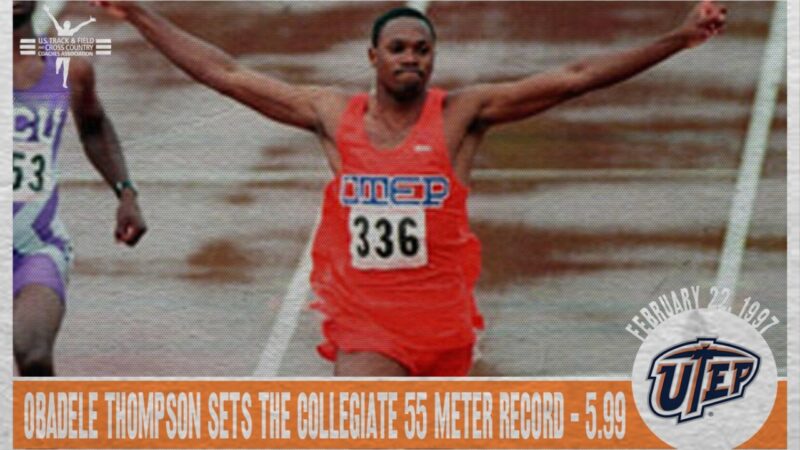Hey there, sports enthusiasts! Ever wondered about the 60-yard dash and its significance in the world of sports? Well, you’re in for a treat. Let’s embark on this journey together, and I promise to keep it light and fun.
The 60-yard dash (a sprint covering 60 yards or 54.86 m), is not just a random distance someone thought of one day. It’s a critical measure used primarily to evaluate the speed and acceleration of American Major League Baseball players.
Fun Fact: In the good ol’ U.S. of A, before everyone went metric-crazy, the 60-yard dash was a popular indoor event. Imagine that!
The Fascination of Speed
Speed. It’s mesmerizing watching someone bolt down a track, muscles pumping, eyes focused, and the crowd roaring. It’s pure, unadulterated athleticism. And the 60-yard dash? It’s the epitome of this fascination.
Now, while the 60-yard dash might seem straightforward, there’s a lot more to it than meets the eye. Why 60 yards? Why not 50 or 70? And how did it become such a significant metric in sports? Stick around, and we’ll unravel these mysteries together.
Historical Context

The 60-yard dash has roots that go way back. In the United States, before the widespread adoption of metricized outdoor running tracks, this dash was a hot event indoors. And up until 1983, it was an annual event at the NCAA Indoor Track and Field Championships. Not just that, the AAU Indoor Track and Field Championships also regularly featured this event.
Pro Tip: If you’re ever in a sports trivia night, remember that the 60-yard dash was a big deal in indoor events. It might just win you a round!
Like all things, the 60-yard dash has evolved. From being a staple in indoor championships to becoming a critical metric for baseball player evaluations, its journey is nothing short of fascinating.
Pioneers of Speed
Speaking of speed, let’s tip our hats to some legends. Obadele Thompson holds the men’s world record with a time of 5.99 seconds in 1997. And for the ladies? Evelyn Ashford clocked in at 6.54 seconds in 1982. Impressive, right?
Fun Fact: Herb Washington from the United States achieved a time of 5.8 h in 1972. Now that’s blazing fast!
The Athletic Significance
If you’re a baseball fan, you know how crucial speed is. Whether it’s dashing to the next base or chasing down a fly ball, speed can make or break a game. And that’s where the 60-yard dash comes in. It’s the go-to metric to evaluate a player’s speed and acceleration.
Beyond Baseball
While baseball might be the poster child for the 60-yard dash, other sports also recognize its value. American Football sometimes uses it, though they generally prefer the 40-yard version.
Speed as a Game-Changer
In the world of sports, a fraction of a second can be the difference between victory and defeat. Speed isn’t just about running fast; it’s about changing the game, making the impossible possible, and leaving spectators in awe.
The Science of Speed

When an athlete takes off, it’s not just about the legs. It’s a symphony of muscles, tendons, and sheer willpower. The human body is a marvel, and when it’s in motion, especially during a sprint, it’s poetry in action.
Key Factors Influencing Speed
Several factors come into play when we talk about speed.
- Biomechanics, for one, plays a pivotal role. How an athlete’s body moves, the efficiency of their stride, and their posture can significantly impact their speed.
- Then there’s genetics. Some folks are just born with a need for speed.
- And of course, training. No matter how naturally gifted an athlete might be, without the right training, they won’t reach their full potential.
Pro Tip: If you’re looking to improve your speed, focus on your biomechanics. A slight tweak in your running form can make a world of difference.
Speed vs. Agility
Now, speed and agility might seem like two sides of the same coin, but they’re distinct. While speed is about how fast you can go, agility is about how quickly you can change direction. Think of it as the difference between a drag racer and a rally car driver.
Training and Preparation
Alright, let’s get down to the nitty-gritty. How do you train for the 60-yard dash? And more importantly, how do you shave off those precious milliseconds to get ahead of the competition?
The Role of Coaching
Having a coach by your side can make a world of difference. They can provide insights, correct your form, and give you the motivation you need to push through. But remember, it’s not just about running faster; it’s about running smarter.
Specialized Drills and Techniques
There are several drills and techniques that can help improve your 60-yard dash time:
- Posture: After your initial acceleration, lean forward slightly with a straight torso. This alignment from ear to ankle ensures you’re driving the ball of your foot into the ground efficiently. A great drill for this is the Tall, Lean and Fall Drill.
- Arm Swing: Your arms play a crucial role in your sprint. Lock your elbows at 90 degrees and swing your arms from your shoulders. Any side-to-side movement can slow you down. The Seated Arm Swing Drill is perfect for mastering this.
- Leg Drive: Instead of lifting your knees up, drive them forward. This propels your body forward. The Wall Acceleration Drill is a fantastic way to improve both your posture and leg drive.
Fun Fact: Did you know that Carl Crawford, a renowned baseball player, is a perfect example of someone with impeccable sprinting form? Check out his photos, and you’ll notice his perfect alignment and 90-degree angles at his knees, ankles, and elbows.
Nutrition and Conditioning

While technique is vital, so is your physical condition. Proper nutrition fuels your body, giving you the energy you need to push through. Conditioning ensures you’re in peak physical shape, reducing the risk of injuries and improving your overall performance.
Psychological Factors
- Mental Toughness and Speed: Speed isn’t just physical; it’s mental too. Mental toughness allows you to push through barriers, whether they’re physical, like fatigue, or mental, like doubt.
- The Importance of Reaction Time: In a sprint, every millisecond counts. Improving your reaction time can give you a significant edge, allowing you to start strong right out of the gate.
- Confidence and Peak Performance: Believe in yourself. Confidence can be the difference between a good performance and a great one. When you step onto that track, know that you’ve got what it takes.
The Competitive Edge
Speed can be a game-changer. It can determine player positions, team strategies, and even game outcomes. A player’s 60-yard dash time can influence decisions on which base they should play or how they should be utilized during a game.
When teams are looking to draft or recruit players, the 60-yard dash time is a significant consideration. It provides insights into a player’s athleticism, potential, and overall fitness.
While the 60-yard dash is primarily associated with baseball, its principles apply to various sports. Whether it’s football, track, or even basketball, speed is always an advantage.
FAQ
Why is the 60-yard dash more prevalent in baseball compared to other sports?
While other sports prioritize different aspects of athleticism, baseball values the 60-yard dash as it closely mirrors the distance between bases, providing a direct measure of a player’s base-running potential.
How often should an athlete train specifically for the 60-yard dash?
Ideally, an athlete should incorporate 60-yard dash training 2-3 times a week, allowing adequate recovery time to prevent injuries and ensure optimal performance.
Are there specific shoes recommended for the 60-yard dash?
Yes, lightweight sprinting spikes or cleats with good grip are recommended. They provide better traction and can help improve acceleration during the dash.
How does altitude affect the 60-yard dash performance?
Higher altitudes have thinner air, which can reduce air resistance. This might give a slight advantage in sprinting times, but the effect is minimal for short distances like the 60-yard dash.
Can the techniques used in the 60-yard dash be applied to longer sprints or marathons?
While some techniques, like proper posture and arm swing, are universal, the intense burst of speed in the 60-yard dash differs from the sustained endurance required in marathons.
How has technology impacted training for the 60-yard dash in recent years?
Modern technology, including wearables and motion analysis software, allows athletes to gain detailed insights into their performance, helping them fine-tune their techniques and improve times.
Conclusion
As we wrap up our exploration of the 60-yard dash, it’s clear that this sprint is more than just a race; it’s a symbol of athleticism, dedication, and the human spirit’s drive to constantly push boundaries.
The allure of the 60-yard dash lies in its simplicity. It’s a straightforward test of speed, yet it encapsulates so much of what we love about sports: the thrill of competition, the joy of personal achievement, and the never-ending quest to be the best version of oneself.
So, the next time you watch an athlete sprinting down the track or field, remember the hard work, dedication, and science behind each step. And who knows? Maybe you’ll be inspired to lace up your shoes and give the 60-yard dash a try yourself.







